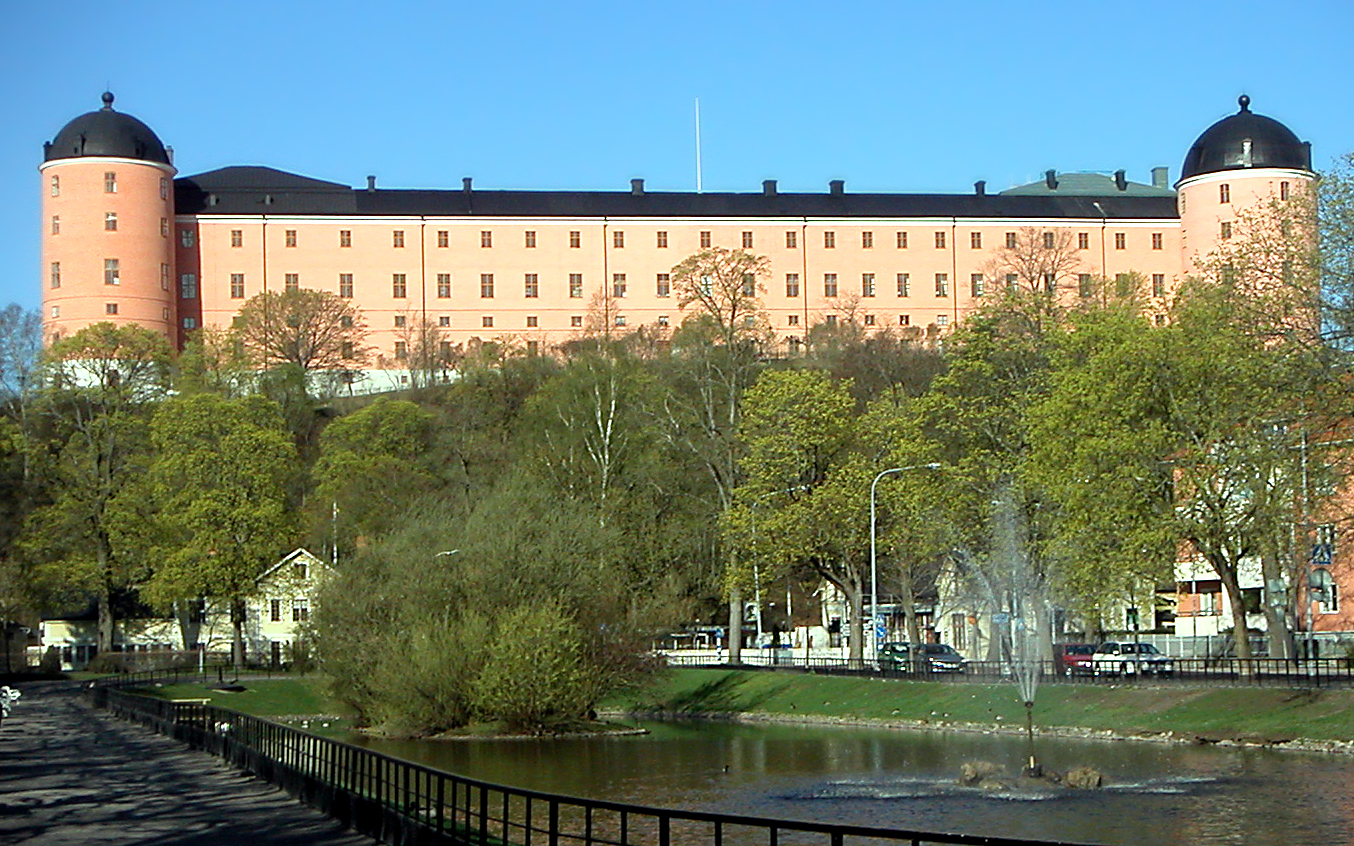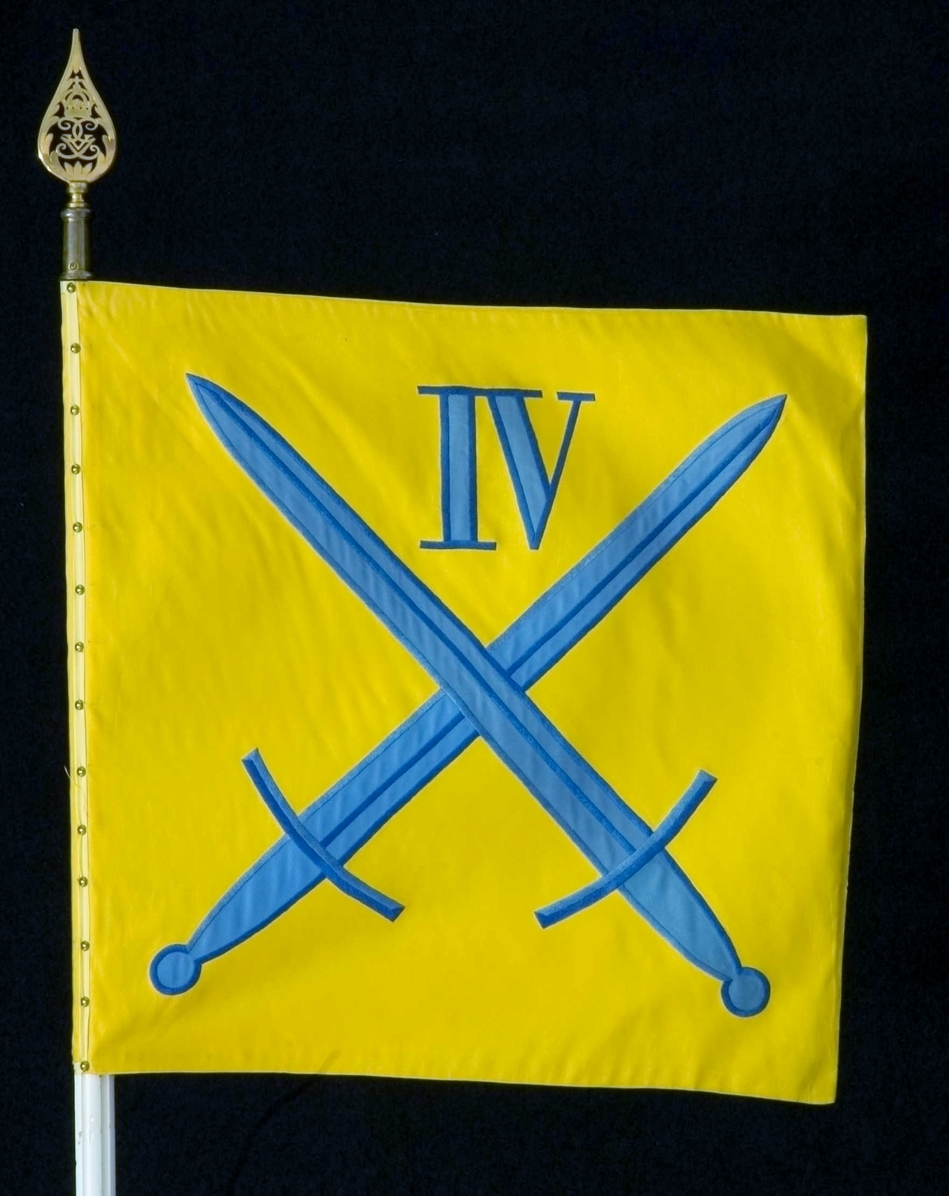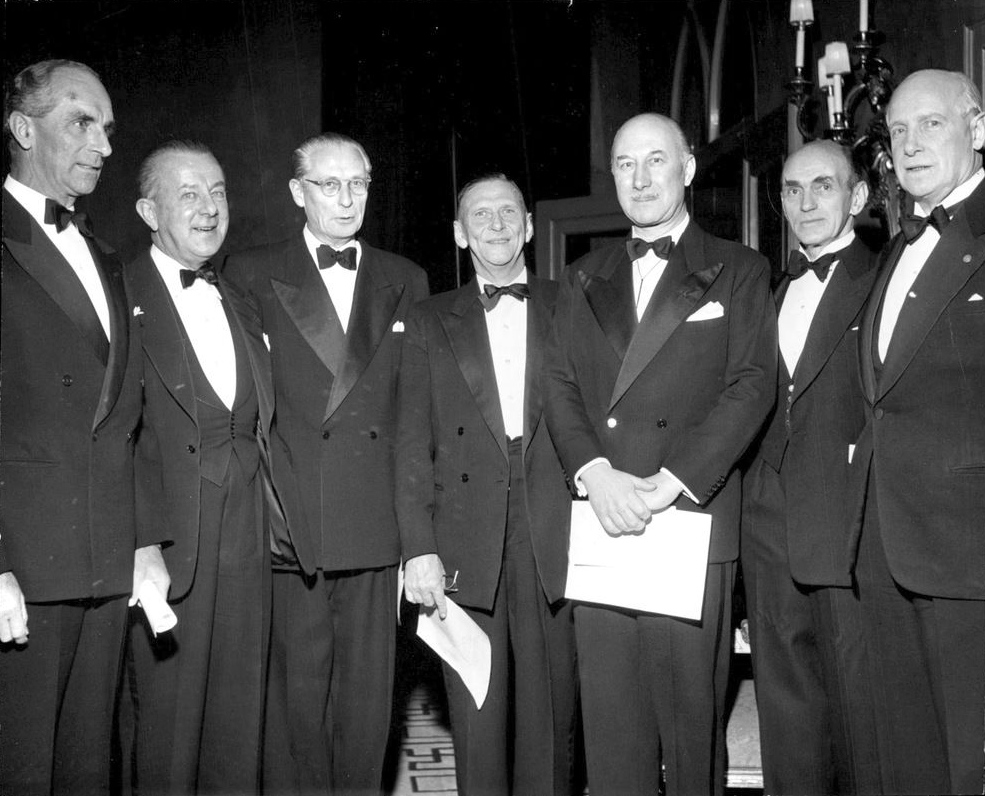|
Carl Björeman
Generallöjtnant, Lieutenant General Karl (Carl) Erik Björeman (8 June 1924 – 10 September 2020) was a senior Swedish Army officer. Björeman served as Chief of Staff of the Southern Military District (Milo S), Southern Military District (1980–1984), and as Commanding General of the Southern Military District (1984–1988). Early life Björeman was born on 8 June 1924 on the farm Kinäs in Östra Ryd Parish, Östergötland County, Sweden, the son of Wiktor Johansson, a farmer, and his wife Anna (née Nilsson). He had two brothers and was the oldest in a group of 22 cousins who all came from Höstbäck farm in Åtvidaberg. One of his cousins was , a member of parliament for Östergötland County (Riksdag constituency), Östergötland County. Björeman worked at home on the farm at a young age, but already at the age of 17 applied to become a volunteer at the Life Grenadier Regiment (Sweden), Life Grenadier Regiment in Linköping in the autumn of 1941. He passed ''studentexamen ... [...More Info...] [...Related Items...] OR: [Wikipedia] [Google] [Baidu] |
Östra Ryd
Östra Ryd is a locality situated in Söderköping Municipality, Östergötland County, Sweden Sweden, formally the Kingdom of Sweden, is a Nordic countries, Nordic country located on the Scandinavian Peninsula in Northern Europe. It borders Norway to the west and north, and Finland to the east. At , Sweden is the largest Nordic count ... with 457 inhabitants in 2010. References Populated places in Söderköping Municipality {{Östergötland-geo-stub ... [...More Info...] [...Related Items...] OR: [Wikipedia] [Google] [Baidu] |
Uppsala
Uppsala ( ; ; archaically spelled ''Upsala'') is the capital of Uppsala County and the List of urban areas in Sweden by population, fourth-largest city in Sweden, after Stockholm, Gothenburg, and Malmö. It had 177,074 inhabitants in 2019. Located north of the capital Stockholm, it is also the seat of Uppsala Municipality. Since 1164, Uppsala has been the ecclesiology, ecclesiastical centre of Sweden, being the seat of the Archbishop of Uppsala, Archbishop of the Church of Sweden. Uppsala is home to Scandinavia's largest cathedral – Uppsala Cathedral, which was the frequent site of the coronation of the Swedish monarch until the late 19th century. Uppsala Castle, built by King Gustav I of Sweden, Gustav Vasa, served as one of the royal residences of the Swedish monarchs, and was expanded several times over its history, making Uppsala the secondary capital of Sweden during its Swedish Empire, greatest extent. Today, it serves as the residence of the Governor of Uppsala County ... [...More Info...] [...Related Items...] OR: [Wikipedia] [Google] [Baidu] |
China
China, officially the People's Republic of China (PRC), is a country in East Asia. With population of China, a population exceeding 1.4 billion, it is the list of countries by population (United Nations), second-most populous country after India, representing 17.4% of the world population. China spans the equivalent of five time zones and Borders of China, borders fourteen countries by land across an area of nearly , making it the list of countries and dependencies by area, third-largest country by land area. The country is divided into 33 Province-level divisions of China, province-level divisions: 22 provinces of China, provinces, 5 autonomous regions of China, autonomous regions, 4 direct-administered municipalities of China, municipalities, and 2 semi-autonomous special administrative regions. Beijing is the country's capital, while Shanghai is List of cities in China by population, its most populous city by urban area and largest financial center. Considered one of six ... [...More Info...] [...Related Items...] OR: [Wikipedia] [Google] [Baidu] |
Stig Synnergren
General (Sweden), General Stig Gustaf Eugén Synnergren (25 February 1915 – 29 April 2004) was a senior Swedish Army officer. Synnergren had an illustrious military career that began in 1939 as a second lieutenant. He played a pivotal role during World War II, serving in the Army Ranger School, Ski Battalion and conducting intelligence operations in Northern Norway after the Battles of Narvik, German occupation of Narvik. His exceptional skills and experience led him to manage the evacuation of Norwegian refugees in Jokkmokk. Synnergren's rapid ascent through the ranks continued, including graduation from the Royal Swedish Army Staff College and various military studies abroad. He held teaching positions and became a major while heading the Tactics Department. Notably, he became the Chief of the Army Staff (Sweden), Chief of the Army Staff in 1963 and ultimately achieved the rank of Supreme Commander of the Swedish Armed Forces in 1967. During his tenure as Supreme Commander, Syn ... [...More Info...] [...Related Items...] OR: [Wikipedia] [Google] [Baidu] |
Swedish Defence University
The Swedish Defence University (, FHS) is situated on Drottning Kristinas väg 37 in Östermalm, Stockholm City Centre, next to the campus of the Royal Institute of Technology. History Today's Swedish Defence University marks the latest development in a long line of military education tradition. The Higher Artillery College in Marieberg was established in Stockholm in the 19th century. The Swedish Defence University has existed in its present form since 1997. The University was established as a national university college on 1 January 2008, allowing it to issue academic degrees. Formerly known in English as the Swedish National Defence College, the University adopted its current name on 1 February 2015. In 2018 the Swedish Defence University received permission to grant two-year master's degrees and doctoral level. Education The University trains and educates domestic and international military and civilian personnel, as well as civilian students. The University offers train ... [...More Info...] [...Related Items...] OR: [Wikipedia] [Google] [Baidu] |
Hälsinge Regiment
The Hälsinge Regiment (), designations I 14, I 14/Fo 49 and I 14/Fo 21, was a Swedish Army infantry regiment that traced its origins back to the 16th century. It was disbanded in 1997. The regiment's soldiers were originally recruited from the provinces of Hälsingland and Gästrikland, and it was later garrisoned in Gästrikland. History The regiment has its origins in fänika, fänikor (companies) raised in Hälsingland and Gästrikland in the 1550s and 1560s. In 1615, these units—along with fänikor from the nearby provinces of Medelpad, Ångermanland and Västerbotten—were organised by Gustav II Adolf into Norrlands storregemente, of which eleven of the total 24 companies were recruited in Hälsingland and Gästrikland. Norrlands storregemente consisted of three field regiments, of which Hälsinge Regiment was one. Sometime around 1624, the grand regiment was permanently split into three smaller regiments, of which Hälsinge Regiment was one. The regiment was off ... [...More Info...] [...Related Items...] OR: [Wikipedia] [Google] [Baidu] |
Eastern Military District (Sweden)
Eastern Military District (, Milo Ö), originally IV Military District () was a Swedish military district, a command of the Swedish Armed Forces that had operational control over Eastern Sweden, for most time of its existence corresponding to the area covered by the counties of Östergötland, Södermanland, Stockholm, Uppsala and Västmanland. The headquarters of Milo Ö were located in Strängnäs. History Milo Ö was created in 1966 along with five other military districts as part of a reorganisation of the administrative divisions of the Swedish Armed Forces. It can be seen as the successor of IV Military District (''IV. militärområdet'') created in 1942, but that did not have the same tasks as Milo Ö. The military area consisted of the land covered by the above-mentioned counties, and from the creation to 1982, also the southern part of Gävleborg County. In 1991, the number of military districts of Sweden was decreased to five, and as a consequence of that, Milo Ö wa ... [...More Info...] [...Related Items...] OR: [Wikipedia] [Google] [Baidu] |
Norrbotten Regiment
The Norrbotten Regiment (), designation I 19, is a Swedish Army arctic armoured, light infantry and commando regiment that traces its origins back to the 19th century. The regiment's soldiers were originally recruited from the province of Norrbotten, and it is currently garrisoned in Boden, Norrbotten. The regiment has the responsibility for training two armoured and one special recon battalion, as well as number of Arctic light infantry battalions from the home guard as well as running the army's winter unit. As of 2018, the Norrbotten Regiment employs 489 professional officers, 402 full-time soldiers, 512 part-time soldiers, 116 civilians and 683 reserve officers. History The regiment was created in 1841 when Västerbotten Field Jäger Regiment was split into two corps units of battalion size, one of them being Norrbotten Field Jäger Corps. The unit was upgraded to regimental size and renamed Norrbotten Regiment in 1892. The regiment had its training grounds at various ... [...More Info...] [...Related Items...] OR: [Wikipedia] [Google] [Baidu] |
Swedish Armed Forces Staff College
The oyalSwedish Armed Forces Staff College (, MHS) was from 1961 to 1996 the Swedish Armed Forces highest institution for officers training, for staff and senior executive education and was located in Stockholm. In 1997 it was merged with the Swedish National Defence College and formed the "new" Swedish National Defence College. History During the first part of the 20th century, the higher officer education was developed in the three military branches, the Army, Navy and Air Force. During the two world wars a variety of new weapons such as armor, air, gas, submarines and nuclear weapons were introduced. Then came the Cold War, which contributed so that the higher officer training at the Royal Swedish Army Staff College, the Royal Swedish Naval Staff College and the Royal Swedish Air Force Staff College in 1961 were merged into a joint staff college, named the Royal Swedish Armed Forces Staff College. The operations began on 1 October 1961 and the first instruction was establis ... [...More Info...] [...Related Items...] OR: [Wikipedia] [Google] [Baidu] |
General Staff Corps
General Staff Corps (, Gst) was an administrative corps within the Swedish Armed Forces between 1937 and 1990 and consisted of Swedish Army officers chosen for duty in the Defence Staff and Army Staff. It replaced the earlier General Staff. History The General Staff Corps was established on 1 July 1937. Besides adjutants and staff adjutants, it consisted of: 1 colonel (also Chief of the Army Staff), 1 colonel, 5 lieutenant colonels, 12 majors and 34 captains. In order to gain entry into the General Staff Corps, first priority was to be top of the class at the then Royal Swedish Army Staff College and after that, 2.5 years of employment as a general staff officer candidate in positions at different departments within the staff. Only after successful officer candidate service with approved credentials, the person concerned was able to assume the prestigious general staff insignia, which consisted of a pair of crossed batons. The officers in the Swedish Army, which were conside ... [...More Info...] [...Related Items...] OR: [Wikipedia] [Google] [Baidu] |
Royal Swedish Army Staff College
The Royal Swedish Army Staff College (, KHS) was a Swedish Army training establishment between 1866 and 1961, providing courses for army officers. It was the home of the Swedish Army's staff college, which provided advanced training for officers. It was located within the Stockholm Garrison in Stockholm, Sweden. History 1866–1951 The Royal Swedish Army Staff College was the name which that the former Higher Artillery School (''Högre artilleriläroverket'') in Marieberg adopted in November 1866. The Swedish Army then received for the first time a training course for staff officers. The initiator of the 1870s reform of the higher officer training was the Chief of the General Staff, Major General Hugo Raab. By promoting an officer training in accordance with academic principles he laid the foundation for today's officer training on a scientific basis. In 1878 the name was passed over to the new educational institution in Stockholm, which would become the academy of military sc ... [...More Info...] [...Related Items...] OR: [Wikipedia] [Google] [Baidu] |
Korea
Korea is a peninsular region in East Asia consisting of the Korean Peninsula, Jeju Island, and smaller islands. Since the end of World War II in 1945, it has been politically Division of Korea, divided at or near the 38th parallel north, 38th parallel between North Korea (Democratic People's Republic of Korea; DPRK) and South Korea (Republic of Korea; ROK). Both countries proclaimed independence in 1948, and the two countries fought the Korean War from 1950 to 1953. The region is bordered by China to the north and Russia to the northeast, across the Yalu River, Amnok (Yalu) and Tumen River, Duman (Tumen) rivers, and is separated from Japan to the southeast by the Korea Strait. Known human habitation of the Korean peninsula dates to 40,000 BC. The kingdom of Gojoseon, which according to tradition was founded in 2333 BC, fell to the Han dynasty in 108 BC. It was followed by the Three Kingdoms of Korea, Three Kingdoms period, in which Korea was divided into Goguryeo, Baekje, a ... [...More Info...] [...Related Items...] OR: [Wikipedia] [Google] [Baidu] |



